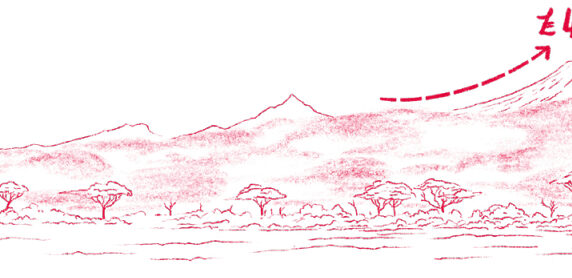Beyond charity: How funders can seed the next generation of development
Working for nearly 20 years in the private sector, I have seen how demand and scale follow behind a high-quality product.
When I joined Ripple Effect in 2013, I saw the impact of our work, but finding long-term funding to deliver transformational change has been a constant challenge.
Over the last five years, I have been to many events and webinars and explored various funding models, from development impact bonds and outcomes funds to social enterprises, in an attempt to find this transformational funding.
Surprisingly, I learned about the most compelling model I’ve come across in a conversation with one of our project participants. Ripple Effect works with smallholder farmers to learn more, grow more and sell more in rural Eastern Africa, and the project participants we work alongside are shrewd business people. I should have known part of the answer would come from them.
Social enterprise for the future
Standing with my friend and impact investor Andrew Street at Kimaeti Farmer Field School in Busia, Western Kenya, we listened to a local farmer called Lynette describe their business model and plans.
This small group of farmers trained by Ripple Effect were growing a range of vegetables and fodder, propagating banana seedlings for sale, and reinvesting their profits into infrastructure to scale their business.
They used their site at Kimaeti as a demo farm to show and train neighbouring community members in agroecology, and they were gifting a proportion of their produce to those in need. They had built a sustainable social enterprise, and I realised we had found what we were looking for.
Working alongside entrepreneurial farmers like Lynette, we will be co-developing an agroecological innovation hub to spread and scale their vision. To do this, we need funding that comes from outside the traditional grant-making structure.
The shrinking funding space
There is an estimated gap of USD 4.2 trillion in funding the Sustainable Development Goals (SDGs). To close this gap, more ideas are needed to mobilise capital not only from governments but the private sector as well.
This is why Ripple Effect is looking to diversify funding sources to include investment funding for development work. This will crucially allow us to plan beyond the short project horizons of typical grant-funded projects.
We have valued partners such as Angello who have journeyed with us, but I believe there are significant gaps in services in the wider market (which could be provided by partners and funders) that currently stunt the potential for new, effective models of development to blossom. For example, building an agroecological innovation hub.
In asking for investment in this project we are directly challenging funders to take more risks so they can support this sort of innovative thinking that would not be attractive to the traditional grant model.
Join our Funding Working Group
Bond’s Funding working group brings together colleagues from across the international development and humanitarian sectors to learn about UK funding and share experiences of relationships with funders. It is open to all Bond members and holds regular learning sessions online.
Join the group“An integrated, prosperous and peaceful Africa”
The African Union Agenda for 2063 calls for “An integrated, prosperous and peaceful Africa, driven by its own citizens and representing a dynamic force in the International arena”. To be part of that vision, international development organisations will need to adapt.
The new business models we are working on support local partners and communities to be the architects of their own solutions. They must take the lead in designing projects and participate in contributing to this development for it to work long-term. At Ripple Effect, alternative financing will allow us to start from the farm and invest accordingly through technology, inputs, knowledge, and skills to realise transformative impacts.
So, what could this look like?
- Being honest about the funding challenges for social enterprises: the current impact investment markets fund proven concepts, which locks out pilot and ideation initiatives.
- Considering grant capital for start-ups. By seeding the early stages of development, funders can be part of shaping ideas early on and possibly even mitigate future risks.
- Investors working together to provide blended financing that spreads financial risk by combining different forms of capital, providers, and instruments.
- Developing friendlier due diligence processes. Many start-ups lack initial documentation such as business plans, financial pitch decks and other requirements, which means they can miss out on essential funding.
- Build confidence in the sector by promoting successful social enterprise stories.
- Agree on a globally accepted definition of the phrase ‘social enterprise’ to bring consistency of regulation across different contexts.
- Blending organisational mission and values without requiring mission drift of the social enterprises or charities.
As I left Western Kenya, I attended a joyous community thanksgiving event bringing together many farmers and community stakeholders. Farmers shared testimonies of how they had gone “from the depths of the sea to safe ground”, and how “we should no longer be beggars, but now must train others in our community”.
The area chief closed with the words “If you want to change lives, you must love the land. You have heard from the farmers themselves. Everything comes from the farm”.
At Ripple Effect we say, “It starts on an African farm”. Farms are businesses. The private sector is an essential part of our approach. We want to broaden this partnership and be the catalyst for a confident and thriving rural Africa.
Category
News & Views



